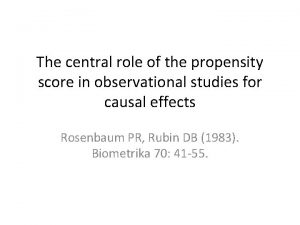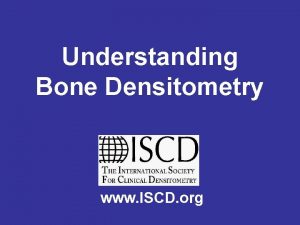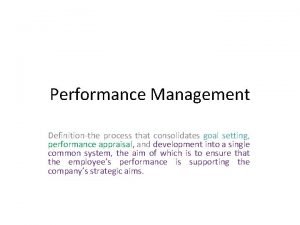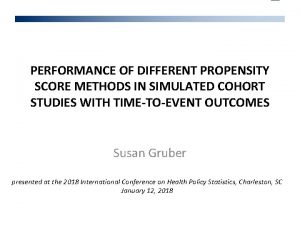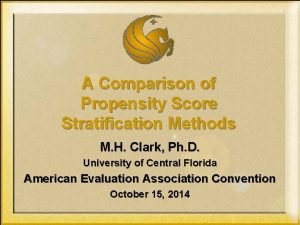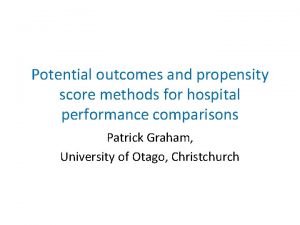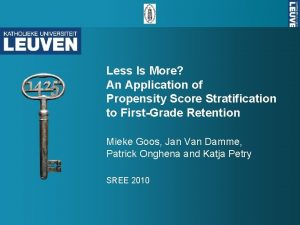Comparing the performance of propensity score methods in













- Slides: 13

Comparing the performance of propensity score methods in healthcare database studies with rare outcomes Franklin, Eddings, Austin, Stuart, Schneeweiss (2017). Statistics in Medicine.

The paper’s idea • There a lot of proposed ways to create and incorporate propensity scores in analyses. • This paper compares the different approaches using two “plasmode” simulation scenarios. • Focuses on common setting with electronic health record data where there are lots of covariates and records but the outcome is rare. • This is a useful scenario for propensity score analyses, because many variables are able to be collapsed into the propensity score.

Estimands of Interest • Sample average treatment effect (SATE) • Sample average treatment effect in the treated (SATT)

Estimation of Propensity Score • • Logistic Regression Bayesian logistic regression (Bayes GLM) Logistic regression with LASSO Boosted logistic regression – Describe – Advantages/disadvantages of each

Marginal estimators of the Risk Ratio (matching) • • 1 -to-1 matching Trimmed 1 -to-1 matching Full matching Trimmed full matching – Describe – Advantages/disadvantages of each

Marginal estimators of the Risk Ratio (stratification) • • Deciles Trimmed deciles Fine strata Trimmed fine strata – Describe – Advantages/disadvantages of each

Marginal estimators of the Risk Ratio (regression adjustment) • • Regress: 1 spline Trimmed regress: 1 spline Regress: 2 splines Trimmed regress: 2 splines – Describe – Advantages/disadvantages of each

Marginal estimators of the Risk Ratio (IPTW) • IPTW (inverse probability of treatment weighting) • Trimmed IPTW • Truncated IPTW – Describe – Advantages/disadvantages of each

Marginal estimators of the Risk Ratio (continued) • Match weights • Trimmed match weights • Truncated match weights – Describe – Advantages/disadvantages of each

Causal Diagram of Simulation Setup

Distribution of Propensity Scores

Absolute Bias

Relative SE
 Propensity score theorem
Propensity score theorem Propensity model meaning
Propensity model meaning Government spending multiplier
Government spending multiplier Comparison and selection among alternatives
Comparison and selection among alternatives A-wax pattern recognition
A-wax pattern recognition Www.iscd.org
Www.iscd.org T score versus z score
T score versus z score Important of performance appraisal
Important of performance appraisal Absolute performance standard
Absolute performance standard Method of performance appraisal
Method of performance appraisal Computer architecture performance evaluation methods
Computer architecture performance evaluation methods Behaviorally anchored rating scale
Behaviorally anchored rating scale Types of performance appraisal
Types of performance appraisal Past oriented appraisal methods
Past oriented appraisal methods
